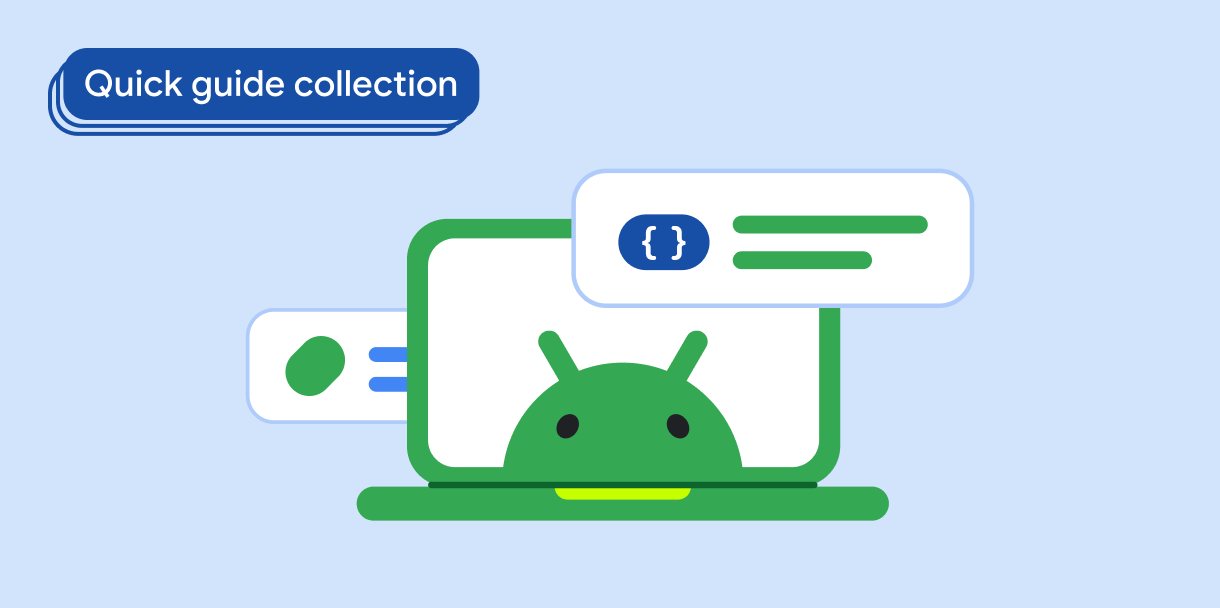পৃষ্ঠা নির্দেশক ব্যবহার করে, আপনি আপনার ব্যবহারকারীদের আপনার অ্যাপের বিষয়বস্তুর মধ্যে তাদের বর্তমান অবস্থান বুঝতে সাহায্য করতে পারেন, যা অগ্রগতির একটি দৃশ্যমান ইঙ্গিত প্রদান করে। এই নেভিগেশনাল ইঙ্গিতগুলি উপযোগী হয় যখন আপনি ক্রমানুসারে বিষয়বস্তু উপস্থাপন করেন, যেমন ক্যারোজেল বাস্তবায়ন, চিত্র গ্যালারী এবং স্লাইডশো, বা তালিকায় পৃষ্ঠা সংখ্যা।
সংস্করণ সামঞ্জস্য
এই বাস্তবায়নের জন্য আপনার প্রজেক্ট minSDK এপিআই লেভেল 21 বা তার উপরে সেট করা প্রয়োজন।
নির্ভরতা
একটি কাস্টম পৃষ্ঠা নির্দেশক সহ একটি অনুভূমিক পেজার তৈরি করুন
নিম্নলিখিত কোডটি একটি অনুভূমিক পেজার তৈরি করে যার একটি পৃষ্ঠা নির্দেশক রয়েছে, ব্যবহারকারীকে কতগুলি পৃষ্ঠা রয়েছে এবং কোন পৃষ্ঠাটি দৃশ্যমান তার জন্য চাক্ষুষ সংকেত দেয়:
val pagerState = rememberPagerState(pageCount = { 4 }) HorizontalPager( state = pagerState, modifier = Modifier.fillMaxSize() ) { page -> // Our page content Text( text = "Page: $page", ) } Row( Modifier .wrapContentHeight() .fillMaxWidth() .align(Alignment.BottomCenter) .padding(bottom = 8.dp), horizontalArrangement = Arrangement.Center ) { repeat(pagerState.pageCount) { iteration -> val color = if (pagerState.currentPage == iteration) Color.DarkGray else Color.LightGray Box( modifier = Modifier .padding(2.dp) .clip(CircleShape) .background(color) .size(16.dp) ) } }
কোড সম্পর্কে মূল পয়েন্ট
- কোডটি একটি
HorizontalPagerপ্রয়োগ করে, যা আপনাকে বিষয়বস্তুর বিভিন্ন পৃষ্ঠার মধ্যে অনুভূমিকভাবে সোয়াইপ করতে দেয়। এই ক্ষেত্রে, প্রতিটি পৃষ্ঠা পৃষ্ঠা নম্বর প্রদর্শন করে। -
rememberPagerState()ফাংশন পেজারকে আরম্ভ করে এবং পৃষ্ঠার সংখ্যা 4 এ সেট করে। এই ফাংশনটি একটি স্টেট অবজেক্ট তৈরি করে যা বর্তমান পৃষ্ঠাটিকে ট্র্যাক করে এবং আপনাকে পেজার নিয়ন্ত্রণ করতে দেয়। -
pagerState.currentPageবৈশিষ্ট্যটি কোন পৃষ্ঠা নির্দেশক হাইলাইট করা উচিত তা নির্ধারণ করতে ব্যবহৃত হয়। - পৃষ্ঠা নির্দেশক একটি
Rowবাস্তবায়ন দ্বারা আচ্ছাদিত একটি পেজারে প্রদর্শিত হয়। - পেজারে প্রতিটি পৃষ্ঠার জন্য একটি 16 ডিপি বৃত্ত আঁকা হয়। বর্তমান পৃষ্ঠার সূচকটি
DarkGrayহিসাবে প্রদর্শিত হয়, যখন বাকি সূচক বৃত্তগুলিLightGray। -
HorizontalPagerমধ্যেTextপ্রতিটি পৃষ্ঠায় "পৃষ্ঠা: [পৃষ্ঠা নম্বর]" পাঠ্য প্রদর্শন করে।
ফলাফল
এই নির্দেশিকা ধারণকারী সংগ্রহ
এই নির্দেশিকাটি এই কিউরেট করা কুইক গাইড সংগ্রহের অংশ যা বৃহত্তর অ্যান্ড্রয়েড উন্নয়ন লক্ষ্যগুলি কভার করে:

একটি তালিকা বা গ্রিড প্রদর্শন করুন




